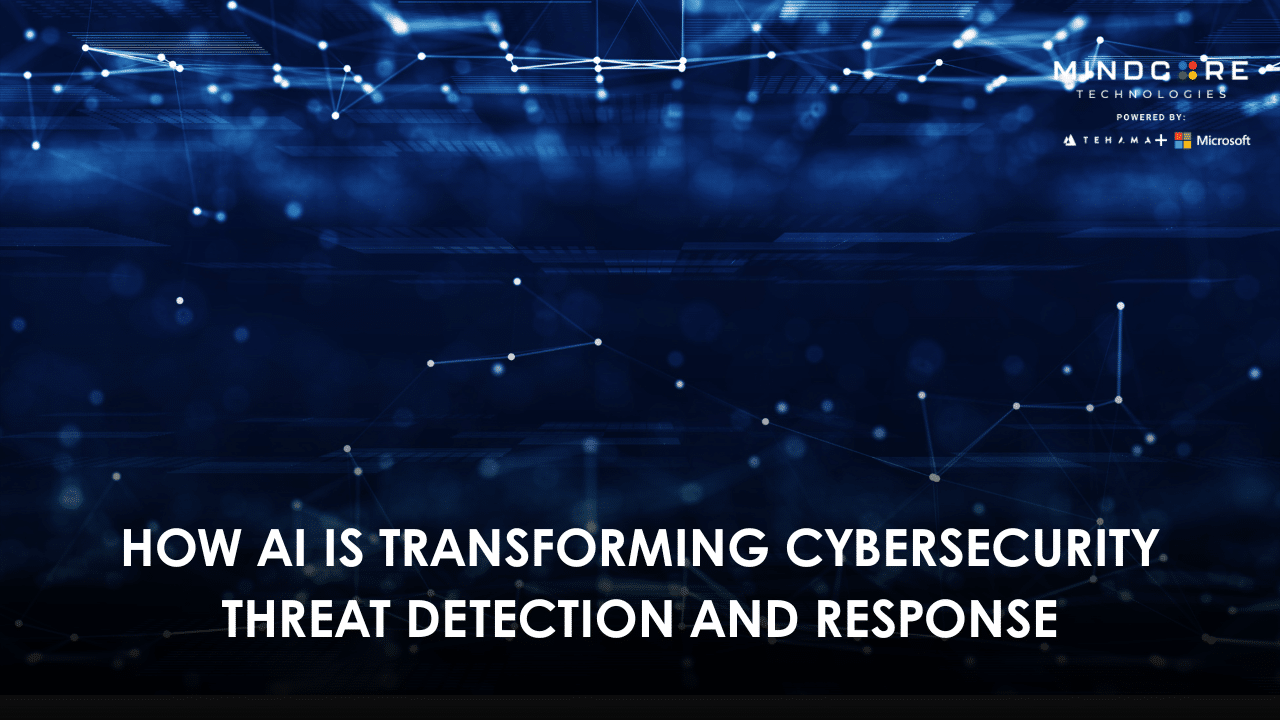Looking at it with an increasing potential found in cyber threats, attackers have grown very advanced, employing methods that old-time security systems cannot well respond to. The very need to detect and react instantly to threats draws upon companies to have faster and smarter methods. This is where AI lends its big helping hand.
This blog discusses the threat detection and response capacity altered by AI. You will learn how it functions, why it is useful, and how businesses might safeguard themselves through it.
Why Traditional Threat Detection and Response Struggles Today
Traditional cybersecurity tools base recognition of threats on known patterns or “signatures.” They are good at finding known malware or attack types. But when an attacker innovates something new, then such systems most often fail.
There are threats such as zero-day attacks, polymorphic malware, or massive data breaches that bypass these older tools. Moreover, manual responses cannot be as fast as the current attack rates.
Because of these challenges, businesses need AI-powered solutions that can adapt and respond faster.
How AI Revolutionizes Threat Detection
AI has powerful options for threat detection. One of the most notable techniques is behavioral analysis. Instead of looking at known attack patterns, it watches for unusual activity. For example, if an employee starts downloading huge amounts of data at an unearthly hour, AI marks the activity as suspicious.
Another technique is to use machine learning models that learn from data and keep improving their capabilities to detect new threats.
Anomaly detection greatly assists as well. AI keeps watch over normal behavior in the network. Once something unusual occurs, say, a great surge in login attempts, AI will spot that anomaly in real-time. These capabilities have made AI cybersecurity tools a must-have in modern threat detection.
Accelerating Threat Response with AI Automation
When an attack occurs, the response has to be quick. AI intervenes by bringing automation to many less-urgent response tasks. These include isolating infected devices, blocking malicious traffic, or rolling back a harmful change.
An AI-driven platform, for example, can detect ransomware infection activities and immediately halt their spread. Instead of taking hours or days, it can now take just minutes.
This automation reduces the potential harm and also allows human security teams to examine more complex threats. Clearly, this is how AI cybersecurity solutions are changing incident response.
Proactive Defense: AI’s Role in Predicting Threats Before They Strike
Instead of just reacting to threats, AI predicts them. By processing tremendous amounts of threat data from across the globe, AI can forecast impending attacks.
If its algorithms detect patterns indicative of a new ransomware campaign, AI systems alert businesses before these attacks reach them. With such predictive powers, firms will be able to harden their defenses in advance.
AI-powered real-time threat intelligence completes the strategy for proactive defense, allowing businesses to stay ahead of attackers rather than react after they have hit.
The Human-AI Collaboration: Enhancing Decision-Making in Cybersecurity
While AI systems are very powerful, they are not yet replacements for specialized human experts. Instead, it collaborates with security teams, causing them to make different decisions.
AI can filter out false positives and assign priority to real threats. It provides clear-cut indications of what needs to be done by human analysts.
A Security Operations Center (SOC) team, for instance, would be able to use AI in managing thousands of alerts, and the SOC focuses only on those that really matter. This brings speed and accuracy to resolving cyber incidents.
Training security teams to utilize AI is equally important. AI cybersecurity certifications could be invested in to ensure staff are prepared for the use of these advanced tools.
Challenges and Limitations of AI in Threat Detection and Response
On the downside, AI also has its share of limitations. False positives and false negatives are challenges that may come along. Without proper training for AI, this system might actually call harmless behavior into question and pass over a real threat.
The great dependency of AI in terms of data with which it is trained on is a second concern. Erroneous data lead to a poor performance of detection.
Another thing that needs to be considered with automated responses is the ethical side. Organizations have to make sure that AI decisions do not breach privacy or cause unintended harm.
To address these challenges, companies need regular audits of their AI systems and continuous oversight by human experts.
Future Trends: Where AI Threat Detection and Response is Headed
The future of AI in cybersecurity looks promising. Some emerging trends include:
- Advanced prediction capability: AI would be increasingly competent in identifying nascent attack signatures.
- Integration with quantum-resistant cybersecurity solutions: To secure against potential threats created by quantum computing.
- Explainable AI: To make the decisions of AI transparent to security teams, who in turn would be able to understand why certain decisions were made.
Fueled by these future technologies, the top AI companies in cybersecurity today will pave the way for businesses to stay ahead of emerging threats.
How Businesses Can Implement AI-Powered Detection and Response Effectively
There should be a clear plan when introducing AI for detecting and responding to threats. First, consider current gaps in security mechanisms. Now, act on where AI could create the most value: speeding up response times, manual verification, or even better threat detection.
hen, choose particular AI cybersecurity solutions that meet your company’s requirements. Providers with proven track records and that support systems well should be your first and best option. Train your security team to comprehend concepts needed for effective use of AI tools through a series of certification classes and hands-on learning.
Finally, constantly work on improving your AI systems using real-life feedback on the accuracy and usefulness of the solutions.
AI integration into your cybersecurity approach is anything but a one-off project. It requires attention and adaptation all along.
Conclusion
AI changes how businesses detect and react to cybercrime attacks. It is a great tool for cyber defense nowadays because it aids in data analysis, attack prediction, and the automatic response to threats.
Nevertheless, AI performs best when complemented with human expertise. If trained security practitioners work alongside AI, they could build better defenses and respond more swiftly to threats. It is not optional for businesses anymore to adopt AI-based threat detection and response if they wish to stay protected against ever-evolving cyber threats.


